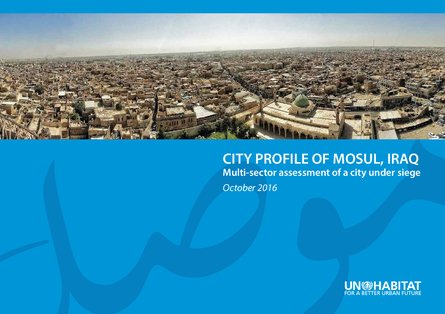
Years of insecurity and ethnic and religious conflict have reshaped Mosul’s demographics, and vastly affected the functionality of its local administration, public institutions and economic establishments. In the decade that followed the fall of the previous regime, armed groups dominated the city and deprived it of a large part of its revenue. Rampant corruption exacerbated the problem and contributed to the take-over of the city’s resources. The fall of the city to ISIL dramatically worsened the situation; its economy almost completely collapsed, its infrastructure and services declined, its public institutions were devastated, and its history and cultural heritage tragically effaced. The city’s minority groups, and many others, were forcefully moved and displaced, and their abandoned properties were confiscated by ISIL. Most of those who remained in the city live in abject conditions, with limited access to basic needs and services, including food and water. This report has analysed the impact of the past years of crisis and the ongoing conflict on the city of Mosul, its population and functionality of the city. It gives a comprehensive picture of the state of the city by looking at twelve aspects of the crisis: demographics, economy, living conditions, urban governance, housing and land for housing, violations and informal settlements, real property, roads and transportation, infrastructure and public utilities, built environment and cultural heritage, health, and education. In what follows, the key findings of each of these aspects of the crisis will be outlined.
Resource collections
- Topics
- UN Habitat - Urban Response Collection
- Urban Response - Urban Crisis Preparedness and Risk Reduction
- Urban Response Collection - Community Engagement and Social Cohesion
- Urban Response Collection - Economic Recovery
- Urban Response Collection - Environment and Climate Change
- Urban Response Collection - Housing, Land and Property
- Urban Response Collection - Urban Crisis Response, Recovery and Reconstruction
- Urban Response Collection - Urban Resilience
